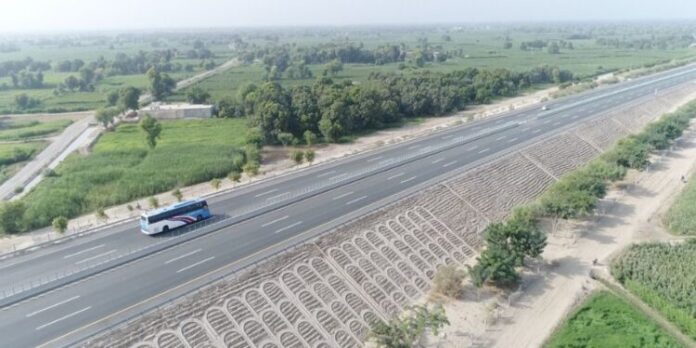- Advertisement -
PESHAWAR, Apr 16 (APP):The three-day International CPEC Seminar organized by China Window in Peshawar opened with a strong reaffirmation of the deep-rooted friendship between Pakistan and China and the future of regional cooperation through the China-Pakistan Economic Corridor.
Key speakers included diplomats, scholars, and government officials who highlighted the achievements of CPEC over the last decade and presented a vision for its second phase.
Addressing the seminar Former Foreign Secretary of Pakistan and current Director General of the Institute of Strategic Studies Islamabad, Sohail Mahmood said that the Pakistan-China relationship is time-tested, founded on mutual trust and consistent support through the decades. He described CPEC as the crown jewel of this partnership, saying that it reflects a shared vision of connectivity, regional integration, and economic prosperity. “The second phase of CPEC focuses on industrialization, agriculture modernization, IT development, and science and technology.
The potential is immense, but it requires institutional coordination and proactive policy implementation,” he said. He further stated that the next 25 years of CPEC could define Pakistan’s role as a regional economic hub, provided the country strengthens its internal governance and regulatory frameworks.
Addressing the participants virtually from Beijing, Pakistan’s Ambassador to China, Khalil Hashmi, said that CPEC stands as a flagship of the Belt and Road Initiative and has transformed Pakistan’s economic landscape in less than a decade.
He said over $26 billion in investments have been made, more than 230,000 jobs created, and dozens of energy and infrastructure projects completed. “Gwadar Port is now fully operational and connected to trade corridors across the region.
The launch of the new Gwadar Airport and the completion of the China-Pakistan Optical Fiber Cable has opened the way for progress in e-commerce, fintech, and IT development,” he said.
Ambassador Hashmi also mentioned that both countries are now focused on upgrading CPEC to a new phase, based on five key corridors—growth, livelihood, innovation, green development, and openness.
These, he said, are aligned with Pakistan’s national goals including the 5Es Framework and the broader economic transformation strategy. He emphasized that the new phase of CPEC will include business-to-business cooperation, scientific innovation, industrial collaboration, and a focus on youth development. “We are entering a phase of high-quality development where our partnership is not just about infrastructure but about sharing knowledge, technology, and prosperity,” he said.
He appreciated the role of China Window in strengthening cultural and economic ties between the two nations and acknowledged the importance of organizing such dialogues to involve the public in the CPEC narrative.
Former Ambassador to China, Naghmana Hashmi, in her remarks, focused on the geopolitical and economic significance of CPEC. She noted that while CPEC has made major contributions to Pakistan’s development, challenges such as internal political instability, provincial coordination gaps, and external misinformation campaigns must be addressed.
She stressed that Pakistan must ensure strong and consistent ownership of CPEC at all levels of government. “There is a need to counter the negative propaganda against CPEC and to highlight how this project serves not just China’s strategic interests, but also Pakistan’s long-term development goals,” she said. Ambassador Naghmana added that energy shortages have been eased because of Chinese-funded power projects, roads and highways have improved logistics, and Special Economic Zones will soon provide a boost to trade and employment. She emphasized that Pakistan must now improve local capacity, enhance its technical workforce, and develop strong policies to attract private sector investment under the CPEC framework.
Iran’s Consul General in Peshawar, Ali Banafshekhah, also addressed the gathering and expressed Iran’s willingness to participate in regional development through CPEC. He proposed enhanced cooperation between Gwadar and Chabahar ports and said that joint energy and trade projects could bring mutual benefits to Iran, Pakistan, and China.
He suggested that cultural institutions like China Window and the Iranian Cultural Center in Peshawar could collaborate to deepen people-to-people ties and create platforms for peace and dialogue. He also highlighted the potential of connecting CPEC with the North-South Transit Corridor and other regional frameworks for a more integrated Asia.
The participants of the seminar praised China Window for hosting such an inclusive and timely event in Peshawar. The event not only served to revisit the successes of CPEC but also offered a comprehensive look at the evolving nature of the partnership, the challenges ahead, and the immense opportunities that lie in regional cooperation through connectivity, trade, and cultural exchange.
Speakers unanimously emphasized that CPEC is more than just a collection of infrastructure projects—it is a symbol of trust, shared growth and a common future.

